CPPopt trend (general)
The CPPopt calculation over time displays a trend of ‘CPPopt’ with the additional features of weighting and averaging. This can be applied both online (bedside) and offline. Besides the benefits of displaying a trend, these additional features were developed to overcome the relatively low CPPopt yield in some (TBI) patients due to the strict curve fitting heuristics limiting its clinical (research) application. From ICM+ version 8.4.4.4 the heuristics were further improved to have a better reliability and stability of the CPPopt value when used prospectively [1].
The options are described below in text, figures and a large table (Table 2) to provide a better understanding about the available CPPopt calculations in the software as used in the COGiTATE study. Please be aware that many researchers are working on this topic so the provided information might not be fully up-to-date:)
Online analysis configuration formula editor (figure 1)
Please open the Calculation function in the software, followed by selecting one of the Secondary Analysis (or Final Analysis) pages, where appropriate, where the CPPopt formula can be added to calculations. Essentially this must be an analysis stage (step/tab) at which CPP and PRx already exists (calculated in the previous step), and thus is available as one of the input variables for the formulae.
At the moment there are two functions available in the software that can be used to calculate CPPopt: OptimalValue and OptimalValueFlex. The latter one is a ‘multiwindow’ extension of the original OptimalValue function added in 2016 [2], and thus both functions share the common part of the configuration form, with the latter one having a few extra options to configure, described below.
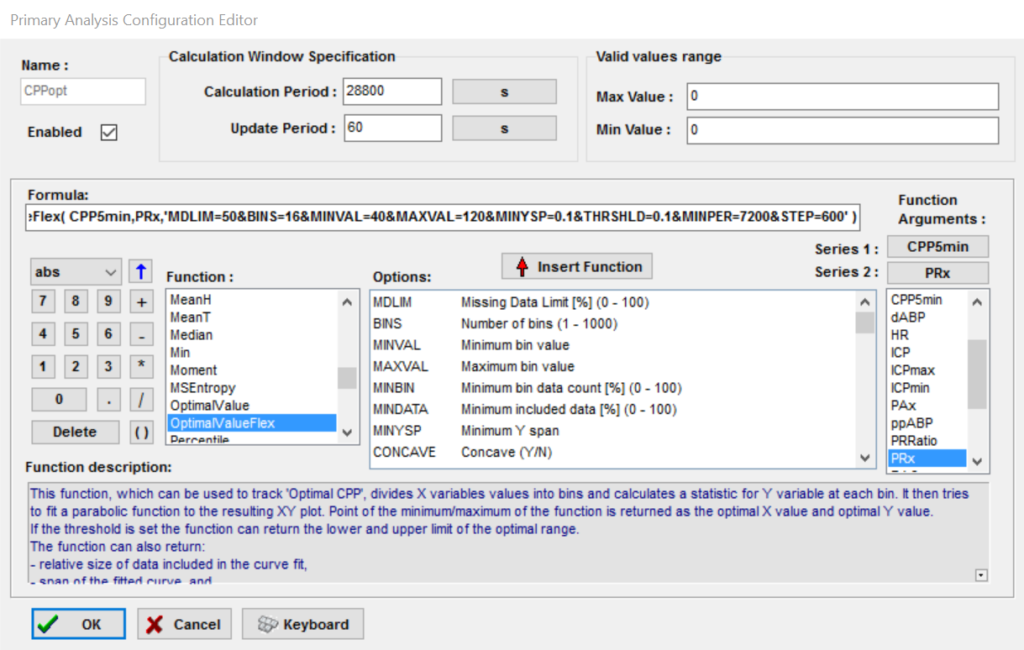
Figure 2. Function options (figure 2 and table 2) Figure 2 shows the panel with the default (commonly used) settings for the CPPopt time trend line as available in the software. The function options panel has many settings. The first part of the panel defines the CPP-PRx curve fitting heuristic as defined under the dropdown ‘CPP-PRx error bar’ menu (see CPPopt calculation). The second part defines the multi-window and weighted average settings. The current (May 2018 ) settings for the OptimalvalueFlex function. The numbers in blue are explained in the section ‘Additional explanation of recent features in configuration panel’ below.
Curve fitting
The CPPopt time series is constructed from several CPP-PRx curves. In COGiTATE five curve fitting criteria are applied in order to keep or remove the curve for building a CPPopt time series. These criteria are:
- Each CPP bin must represent at least 3% of the total data count. In this way, CPP values that are very scarcely represented, likely due to short spikes or drops, but not to the physiological trend, will be disregarded.
- At least 50% of the data in the time window must be included in the curve fit.
- A PRx variation of at least 0.2 is mandated (thus rejecting flatter PRx-CPP curves).
- The PRx range of interest is enforced to be between -0.3 and 0.6: the alghorithm will not return any CPPopt value when PRx is always high (indicating a complete loss of pressure reactivity) or always very low (pressure reactivity preserved at each CPP bin).
- The coefficient of determination of the fitted curve R2 full (calculated also for the bins excluded from the curve fitting process) must be at least 0.2
CPPopt time serie construction
Due to strict curve fitting heuristics, patients’ treatment or monitoring factors, gaps in the data can occur. Some mathematical approaches can be selected to improve the continuity and stability of the CPPopt trend [1-3]. These settings are the multi-window calculation and application of a weighted average.
Multi-window CPPopt calculation with (optional) weighted average
Multi-window means that for calculating one (averaged) CPPopt, not one (single) calculation window is used but a set of calculation windows with increasing lengths [1-3] and the results of all the windows are combined. In the example used over here the maximum calculation window is set at 28800 sec (8 hours, figure 1) and the minimum is set at 7200 sec (2 hours, figure 2). As steps of 600 sec (10 min) are chosen (figure 2) in total 36 extending calculation windows are created after 8 hours of monitoring (6 hours * 60 min/10 min). Therefore, after 8 hours of monitoring the CPPopt trend can consist of 36 averaged CPPopt values, the multi-window calculation. This averaged value is updated every minute (figure 1). In other words, at a certain time e.g. t=9 hours the computed CPPopt value in the time trend line may consist of an average of 36 CPPopt values.
In addition, a weighted average option can be selected for the multi-window calculation according Equation 1 and 2, which describes how the 36 CPPopt values (or less, if some of the windows did not yield a valid value) are combined.
Multi-window weight
The curves (these are the curves that passes the curve fitting criteria check) are combined by giving a weighting to each curve given by

Trend line construction
After the assessment of which curves are included in the time series or not (by the multi-window weight) an additional exponential weighted average function (EWA) is applied to the resulted time series. This function further smoothen the time series (analysis has not been published yet). The smoothing is given by:

With α a fixed parameter and k a time dependent variable. This additional weighting is applied to further smoothen the CPPopt time series and fill in reasonable gaps. The time series weight is applied to the data from the last 2 hours (which is the calculation period set at 7200 seconds) and updates every minute. In other words, looking at the current data time point the CPPopt time series (output of the OptimalValueFlex function) over the last 2 hours is used in the EWA function (figure 3 ).

Figure 3 the time period that is used for the calculation of the smoothing. The last two hours of the recording are used for the smoothing.
Because k(t) increases towards more recent data, the more recent CPPopt values get a higher weight. This results in a CPPopt trendline. Figure 4 shows the function in ICM+.
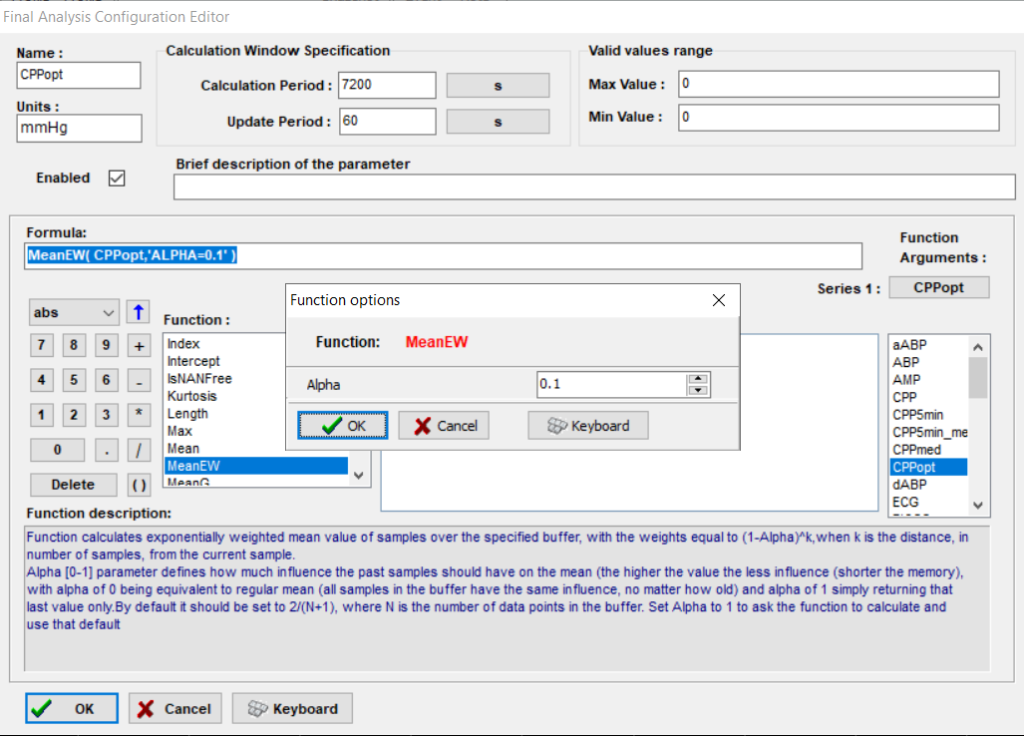
CPPopt trend result (multi-window + weighting)
Figure 5 shows the CPPopt weighted average multi-window trend. The result is much more smooth and continuous which makes the tool clinically more appealing and practical.
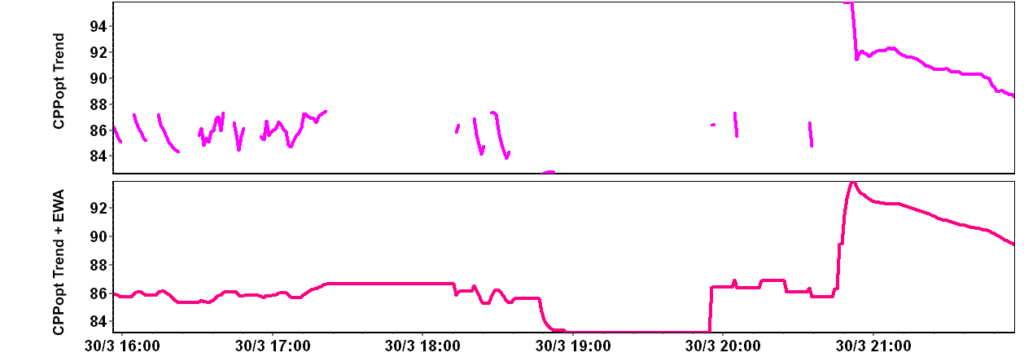
Additional explanation of recent features in the configuration panel
Recently (in the most recent software release 8.4.4.4) several options have been added to the configuration panel that might improve the variability and stability of the CPPopt calculation. These are the settings/options described below. For other settings of the multi-window calculation see, CPPopt trends.We provide a short overview of the settings in the text and table 2 below as used in COGiTATE.
CURVE FITTING CRITERIA
1 Min all data fit R2 value
This is the cut-off value of R2 (goodness of fit) A value higher than the cut off will be included from the curve fitting procedure. R2 can be used as R2 or R2full, where R2full is the pseudo- R2 which means that also the non-fitted bins are included for the CPPopt calculation.
2 Enforce Y-region MIN/MAX (figure 6)
When the calculated CPP-PRx curve is completely out of the range MIN to MAX PRx values, no CPPopt value will be returned. This situation will occur, when the cerebrovascular reactivity is completely intact (PRx<-0.3) or entirely impaired (PRx>0.6) over the whole range.
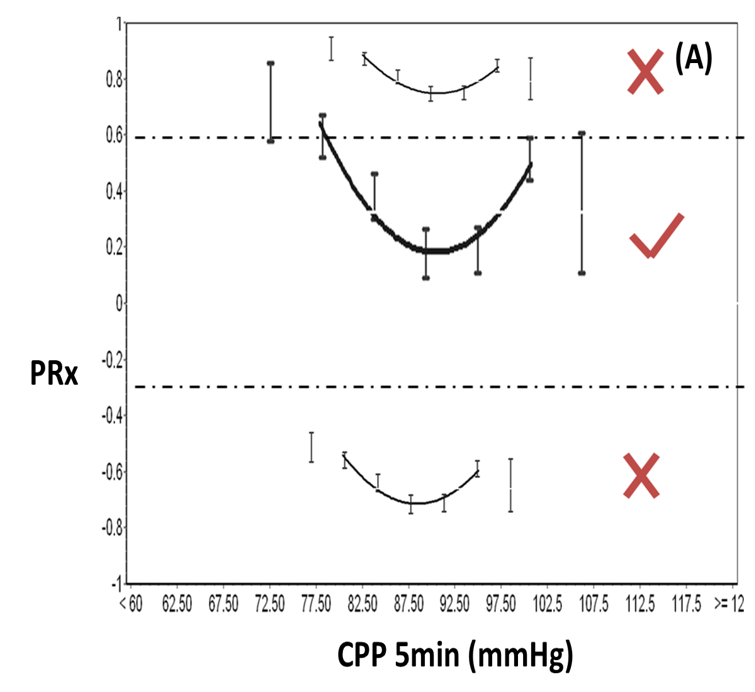
OUTPUT SELECTIONS
3,4Optimal CPP range (figure 7 and 8)
This option is not used in COGiTATE. Click here, for an exaplantion of additional CPPopt features.
4 Output value type
Output value type Users can select different output parameters to be calculated in the software. For CPPopt calculation (or MABPopt) the ‘Optimal X’ output is selected. At present more than nine different output parameters can be selected, including CPPopt, PRxopt, LLA, ULA, and parameters describing the quality and type of the fit. Most of them still need further studies to improve understanding of their clinical significance and usefulness. Multi-window treatment and weighted average
MULTI-WINDOW TREATMENT AND WEIGHTED AVERAGE
5 Fit Error weight exponential
This is the weight factor (? in
Equation 2) given to the R2full fitted curve.
6 (Full)Fit data
When the box ‘Use R2 for fit quality’ is ticked the R2 data is used for the weighting. This means that only the bins that fits the curve
are used for the calculation. When both boxes are ticked the R2 full
data is used. This means that also the bins that were not fit through the curve
are used.
When none of these boxes are ticked or when only ‘Use full fitt error’ is ticked: the formula as described by Liu et al. is used (see settings as described in Liu et al.)
7 Non- parabolic window weight (figure 11)
Non- parabolic window weight (figure 11) The concept of CPPopt relies on the observations that U-shaped curves are present with a clear PRx minimum (parabolic curves, figure 11 (I)). Sometimes only parts of these curves are present in the selected calculation window. In this situation only ascending or descending curves/lines are present (non-parabolic curves, figure 11 (II)). CPPopt in these situations might be over- (ascending) or underestimated (descending). To address this potential problem, parabolic curves (I) might be given more weight than the non-parabolic curves (II) in the final multi-window calculation. In contrast to window length and (full) fit-error, this rule is linearly related to the general weight factor. As seen in Equation 1, the parabolic weight has a fixed value 1 and the non-parabolic weight factor (γ) can be set in configuration. The lower the value of this weight factor, the less the overall weight factor is influenced by non-parabolic curves.
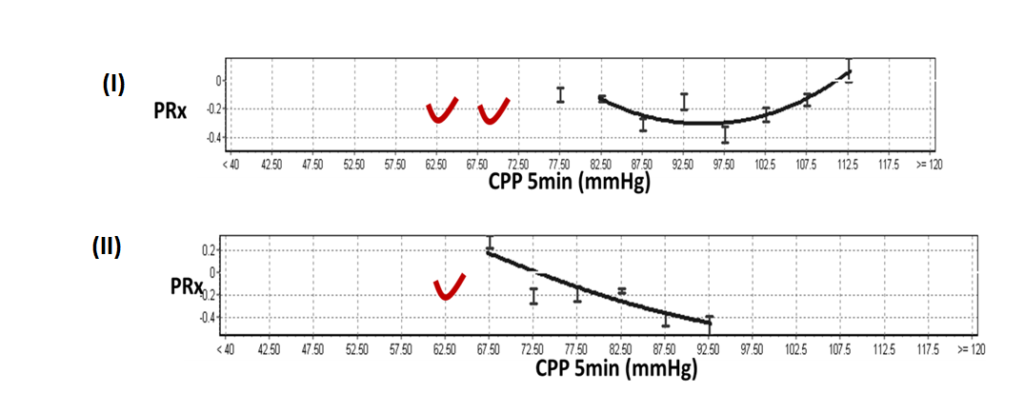
Table 2 CPPopt time trend line settings:
| SETTING | DESCRIPTION | DEFAULT |
|---|---|---|
| Missing data limit | Percentage of missing data values in the calculation window below which the calculation will not be performed. | 50% |
| Number of bins | A CPP bin is the range of values that are stored as one unit. When the minimum bin is 40 mmHg and the maximum bin is 120 mmHg and the number of bins is set at 16, the CPP bin width is 5 mmHg. | 16 subsets (adults) |
| Minimum bin value | CPP bins below this minimum value are not used for curve fitting. | 40 mmHg (adults) |
| Maximum bin value | CPP bins above this maximum value are not used for curve fitting. | 120 mmHg (adults) |
| Minimum bin data count [%] | Relative minimum number of data points included in the bin for it to be available for the curve fitting. | 1-2% |
| Minimum included data [%] | Relative minimum number of data points that has to be covered by the fitted curve. | 50% |
| Minimum Y span | Minimum span of PRx covered by the fitted curve. In other words, too flat curves (PRx span <0.2) are rejected. | 0.2 |
| Minimum fit R2 value | Minimum value of coefficient of Determinant for the fit | 0.0 |
| Minimum all data fit R2 value | Minimum value of coefficient of determinant for the fit on the original data (not bins) | 0.2 |
| Concave | If set a concave function (parabolic) will be used. | Not used for CPPopt |
| Need not to include ‘best’ | 'Best' CPP refers to the CPP bin with the lowest PRx value in the calculation period. If set, this option will only allow curve fitting when the curve covers the 'best' CPP bin. | Optional |
| Use error weighting | If set, this option will use error bar size to weight the contribution of the different CPP bins in the curve fitting process. | Optional |
| Enforce y-range | If set, this option makes sure the fitted curve overlaps the specified PRx values. If it is outside of the range the curve will be rejected. Settings to set: Enforce Y-range – Min, Enforce Y-region – Max. | Optional |
| Enforce Y-region – Min | This option sets the value for the LOWER border of the PRx range that the fitted curve must overlap. | -0.3 |
| Enforce Y-region – Max | This option sets value for the UPPER border of the PRx-range that the fitted curve must overlap. | 0.6 |
| Optimal range threshold | This option allows for calculation of LOWER and UPPER CPP limit of cerebrovascular reactivity (LLR/ULR). A PRx threshold has to be selected. | 0.25 |
| Output value type | Different output variables can be selected for the 'optimal range calculation'. | Optimal X is used. |
| Min. Calculation period | Minimum calculation period [s] for the multi- window approach. The 'maximum' calculation period is set in primary analysis window. This function is only relevant when 'multi-window treatment option' is Weighted Average (see below). | 7200 sec (2 hours). |
| Step | Step [s] by which the multi-window gets extended (retrospectively) with each iteration. Please read the text for an example. This function is only relevant when multi-window treatment option is Weighted Average. | 600 sec (10 min). |
| Multi window treatment | Different output values can be selected for this variable. | Weighted Average is used. |
| Window weight exp | Negative exponent of the 'calculation window duration' weight factor to be applied. Only applicable if multi window treatment is selected. | 0 |
| Fit error weight exponent | Negative exponent of the 'fit error' weight factor to be applied. Only applicable if multi window treatment is selected. | 1 |
| Use R2 for fit quality | If set, coefficient of determinant, R2, will be used for the weights, as R2 beta | Checked |
| Use fullfit error | If set the fit error calculated on the original data point (full fit)- rather than bins means (standard fit error) - will be used. | Checked |
| Non-parabolic window weight | Weight applied to non-parabolic curve fitting results (ascending or descending lines). | 0 |
References
[1] Beqiri, E., Ercole, A., Aries, et al. Towards autoregulation-oriented management after traumatic brain injury: increasing the reliability and stability of the CPPopt algorithm. Journal of clinical monitoring and computing, 2023.
[2] Liu X, Czosnyka M, Aries MJH, et al. Monitoring of optimal cerebral perfusion pressure using a multi-window weighting algorithm in traumatic brain injured patients. Journal of neurotrauma. 2017.
[3] Depreitere B1, Güiza F, Van den Berghe G, Schuhmann MU, Maier G, Piper I, Meyfroidt G. Pressure autoregulation monitoring and cerebral perfusion pressure target recommendation in patients with severe traumatic brain injury based on minute-by-minute monitoring data. Journal of neurosurgery (2014).
[4] Sorrentino E, Diedler J, Kasprowicz M, Budohoski KP, Haubrich C, Smielewski P, Outtrim JG, Manktelow A, Hutchinson PJ, Pickard JD, Menon DK, Czosnyka M. Critical thresholds for cerebrovascular reactivity after traumatic brain injury. Neurocrit Care. 2012 Apr;16(2):258-66.
[5] Donnelly J, Czosnyka M , Adams H, Robba C, Steiner LA, Cardim D, Cabella B, Liu X, Ercole A, Hutchinson PJ, Menon DK, Aries MJH1, Smielewski P. Individualising CPP thresholds in severe Traumatic Brain Injury using cerebral pressure reactivity. Crit Care Med 2017 [In Print]
